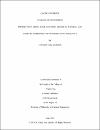| Abstract | Gas hydrates are ice-like compounds that are formed when small gas molecules get trapped within the water molecules at high pressure and low-temperature conditions. The formation of gas hydrates in the offshore subsea lines can lead to unwanted blockages and cause operations shut down. To prevent hydrate formation the chemical inhibitors like methanol and mono-ethylene glycol (MEG) are injected at the wellhead. But, the major drawbacks of using these inhibitors is that they are toxic, flammable, have environmental constraints and are required in bulk quantities ( > 30 wt%).
In this work, for the first time, a comprehensive experimental study on the use of amino acids and ionic liquids as the natural gas hydrate inhibitors in the presence of synergent (PEO) have been conducted at wide process conditions (38-120 bars). The results show that the selected amino acids and ionic liquids exhibit dual functional behaviour by providing the temperature shift of around 1.5-2.3 oC and delaying the hydrate formation time from 0.5-1.5 hr. By the addition of synergent (PEO) with amino acids and ionic liquids, the hydrate formation time was delayed by 6 - 24 hr.
The ionic liquids with shorter cationic alkyl chain and amino acids with higher solubility were observed to provide better hydrate inhibition effect. The inhibitors tend to show better hydrate inhibition effect at low pressures (40 bars) and their inhibition effect decreases as the pressure rises. At the same concentration (10 wt%), the ammonium-based ionic liquid [EA][Of] provided the inhibition effect similar to MEG and at the higher concentration (20 wt%) the amino acid glycine provided better hydrate inhibition effect than the MEG. This indicates that both amino acids and ionic liquids are potential gas hydrate inhibitors, but amino acids and their synergent mixtures are more suited for the large-scale usage due to their biological nature and widescale production.
The effect of stirring on the hydrate crystal formation at different stirring rates (100-1400 RPM) was also investigated. It was found that a threshold limit exists for the stirring rate, above and below which no hydrate formation is likely to occur within the selected system. The maximum hydrate crystal formation occurs at moderate stirring rates and very high or low stirring rates are not suited for the stable hydrate crystal growth and formation.
This work intends to provide industry with new generation of inhibitors that are cost effective, environmentally benign and offer strong hydrate inhibition strength. This work is beneficial for the industry and academic researchers as the required dosage of hydrate inhibitors has been reduced from 40 wt% to 5 wt%, which helps to reduce the overall CAPEX cost and reduce environmental concerns related to the disposal of the hydrate inhibitors. This work offers new arena of research in the area of hydrate inhibitors + synergents mixtures. These mixtures are effective and have potential to replace conventional hydrate inhibitors like methanol and MEG |


